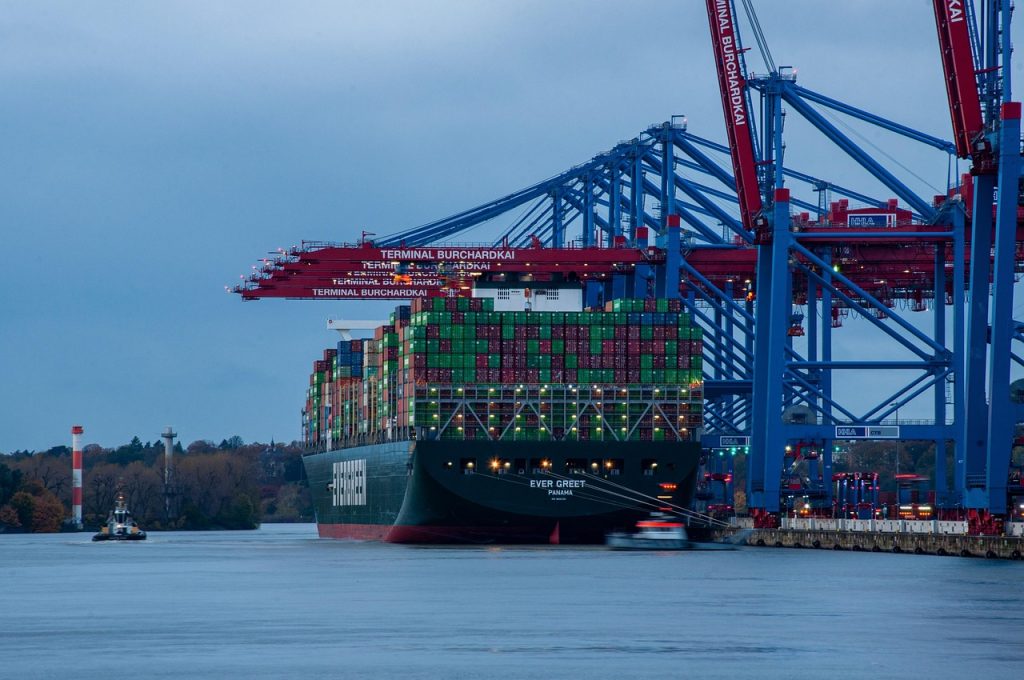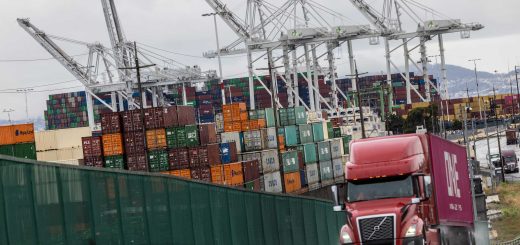Reciprocal Port Fees: U.S. and China Begin Charging Each Other — What It Means for Container Routes & China Consolidation
Introduction
In October 2025, the global shipping world entered a new phase of “maritime tit-for-tat.” On October 14, both the United States and China simultaneously enacted reciprocal port fees targeting each other’s vessels — a clear escalation in their trade and maritime confrontation. Reuters+2Reuters+2
- The U.S. instituted extra charges on vessels built, owned, operated by Chinese entities. Reuters+2Reuters+2
- In retaliation, China began charging its own port fees on U.S.-linked ships (U.S.-owned, operated, flagged, or built). Reuters+3Reuters+3Reuters+3
This development is not just geopolitics — for consolidators (those who aggregate many Chinese-origin parcels or cargo and forward to Europe or North America), this shift could meaningfully alter routing cost, vessel choice, freight strategies, and margin models.
This article will cover:
- What exactly the reciprocal port fees are, how they work, and their escalation schedule
- The immediate & medium-term impact on container shipping routes and tariffs
- How these changes affect China consolidation operations in Europe / North America
- Strategic responses & adjustments consolidators should adopt
- A 90-day playbook
- Risks and what to monitor

1. The Architecture of Reciprocal Port Fees
1.1 U.S. Fee Regime Targeting Chinese Vessels
- The U.S. port fees are part of a Section 301 / maritime strategy to penalize Chinese dominance in shipbuilding, ownership, and maritime logistics. Reuters+2Reuters+2
- The projected cost across the top ten global shipping companies is estimated at about USD 3.2 billion, with COSCO alone expected to bear nearly half. Reuters+1
- The fees target vessels that are Chinese-built, Chinese-owned, or operated by Chinese entities. Reuters+2Reuters+2
- The charges are levied per voyage (at the first U.S. port of entry) rather than per port call. Reuters+1
1.2 China’s Retaliatory Fees on U.S.-Linked Ships
- In response, China announced port fees of 400 yuan (~USD 56) per net metric ton for U.S.-linked vessels arriving in Chinese ports, effective the same date. Reuters+2Reuters+2
- These Chinese fees will escalate:
- 640 yuan (≈ USD 89) from April 17, 2026
- 880 yuan (≈ USD 124) from April 17, 2027
- 1,120 yuan (≈ USD 157) from April 17, 2028 Reuters+2Reuters+2
- China exempted Chinese-built ships from this levy, as well as certain repair/empty vessel categories. Reuters+2Reuters+2
Thus, from October 14, 2025 onward, many vessels could pay port fees both when entering the U.S. and entering Chinese ports, depending on their ownership, registry, or operations.
2. Effects on Shipping Routes & Container Flows
The reciprocal port fees create new cost asymmetries and distortions in existing global shipping routes.
2.1 Cost Inflation on Affected Routes
- Carriers operating Chinese-linked vessels on U.S. routes will see per-voyage cost increases. These costs are likely to be passed down, with freight surcharges or adjusted base rates.
- Some carriers may choose to reroute to non-Chinese vessels, or reduce usage of direct China → U.S. legs, to avoid or mitigate fees.
2.2 Route Rebalancing & Diversions
- Ships may avoid Chinese port calls or U.S. port calls where fees are highest, choosing transshipment via third-party ports, or alternative corridors.
- Some cargo may move via hubs in Asia (e.g. Singapore, Malaysia) or in the Middle East to avoid direct China → U.S. legs.
- Goods may be redirected via Europe: from China → Europe → onward to U.S. (for some goods), especially if consolidated in EU hubs.
2.3 Impact on Blank Sailings & Capacity Allocation
- Shipping lines may reduce frequency on routes that are heavily penalized. Some sailings may be “blanked” (cancelled) to avoid taking on fee costs.
- Capacity may shift toward more “fee-neutral” or exempt vessels, affecting space allocation, booking availability, and freight rates.
3. Implications for China Consolidation into Europe & North America
For consolidation businesses that collect goods in China (or Chinese origin) and forward them to European or U.S./Canada customers, the reciprocal port fees reshape many operational assumptions.
3.1 Increased Freight & Route Cost
- The part of the route involving China → U.S. or U.S. port calls is now more expensive. Consolidators may see increased ocean freight costs (or surcharges) due to fee pass-through.
- Even for goods destined for Europe, carriers may price in higher global cost burdens, raising Asia→Europe freight rates indirectly.
3.2 Rethinking Routing & Transit Planning
- For U.S. customers: consolidation may shift toward using “non-Chinese” vessel legs, or routing via third countries to avoid fee exposure.
- For Europe customers: goods may transit through EU ports or use Europe hubs to reduce direct China → U.S. traffic.
- Consolidation frequency, batch sizing, and shipping windows may need adjustments to reduce number of voyages into high-fee zones.
3.3 Vessel Selection & Carrier Strategy
- Consolidators should evaluate which carriers / shipping lines use vessels exposed to fees versus those exempt or minimised risk.
- Using carriers whose vessels are Chinese-built but not Chinese-operated, or vice versa, may help reduce fee burden (depending on exemption status).
3.4 Inventory & Buffer Stock Adjustments
- To reduce reliance on frequent China → U.S. legs, consolidators may hold more inventory downstream (in U.S. hubs) to reduce shipping frequency.
- For Europe markets, more inventory in EU warehouses may buffer against volatility in China → route costs.
3.5 Pricing & Margin Rebalancing
- Consolidators must recalculate landed cost models to include potential port fees both ways.
- Margins may shrink on lower value SKUs; some SKUs may need price increases, or removal if unprofitable under new cost pressure.
- Some customers may accept slight price increases in return for more predictable shipping and fewer delays.
4. Strategic Moves Consolidators & Sellers Must Take
Below are recommended strategies to adapt to this new reciprocal port fee regime.
4.1 Audit Vessel & Carrier Exposure
- Map which carriers / routes you rely on; determine which vessels are Chinese-owned / built / operated and thus exposed to fees.
- Prefer carriers with lower exposure (non-Chinese built or non-Chinese owned vessels, or exempt vessels under defined criteria).
4.2 Route Optimization & Avoidance Strategies
- Use transshipment via third-party ports; avoid direct China → U.S. port calls where possible.
- Route via Europe where possible, or use EU hubs to service NA markets partly via re-exports.
- Combine shipments into fewer voyage entries to reduce number of fee events.
4.3 Leverage Warehousing & Hubs Downstream
- Increase use of U.S. domestic warehousing: import in bulk less frequently and forward domestically for last-mile.
- For Europe: EU warehouses + distribution hubs reduce dependence on China → U.S. legs entirely.
4.4 Contracting & Freight Negotiations
- Negotiate long-term contracts with carriers to fix or cap surcharge pass-throughs.
- Include clauses that address fee escalation scenarios or cost sharing arrangements.
- Seek carriers willing to absorb some of the fee burden for volume or strategic partnership.
4.5 Phased Pilots & Route Testing
- Run test shipments using alternate routes, carriers, vessel types, to measure cost, transit time, and reliability.
- Use these pilots to recalibrate pricing, margins, and service promises to customers.
5. 90-Day Playbook for Consolidators
Here is a suggested phased roadmap for adapting your business to this new environment.
| Days | Key Actions |
|---|---|
| Day 0–30 | • Audit your current shipping network: which carriers, vessels, route legs are impacted. • Rebuild landed cost models including estimated reciprocal port fees. • Initiate discussions with carriers about future fee pass-throughs and route alternatives. • Engage downstream warehousing / fulfillment partners in U.S. / EU to explore inventory shift. |
| Day 31–60 | • Pilot shipments via alternative routes / carriers with lower exposure. • Run scenario comparisons (direct vs via intermediate port) for cost, time, risk. • Adjust pricing / service tiers for customers to reflect fee exposure. • Secure contracts or space commitments in U.S./EU hubs to reduce reliance on high-fee legs. |
| Day 61–90 | • Evaluate pilot results; scale the better routes. • Finalize partnerships with carriers / warehouses / forwarders based on data. • Lock in contract terms addressing fee surcharges. • Monitor geopolitical / policy changes closely (tariff escalations, further maritime rules). |
6. Risk Factors & What to Watch
- Carrier responses: ships may be reflagged, ownership structures changed to avoid classification; new exemptions may be introduced.
- Fee escalation or expansion: fee schedules may be increased beyond initial projections.
- Policy change: reciprocal fees may provoke further retaliatory action (tariffs, bans) that affect trade flows.
- Route congestion: as many reroute to avoid fee zones, alternative routes or ports may face capacity strain.
- Customer pushback: cost increases or delays may stress your customer satisfaction if not communicated properly.
Conclusion
The reciprocal port fees introduced by the U.S. and China on October 14, 2025 mark a significant inflection point in maritime trade. What was once a neutral conduit (shipping) now clearly becomes a domain of geopolitical leverage. For consolidators and logistics operators handling China origin goods to Europe or North America, these changes must be taken seriously.
Adapting quickly by auditing vessel exposure, rerouting, using downstream warehousing, renegotiating contracts, and piloting alternative routes is critical. Those who adjust early will preserve margins and maintain service reliability; those who don’t may find their operations under cost pressure and routes disrupted.

